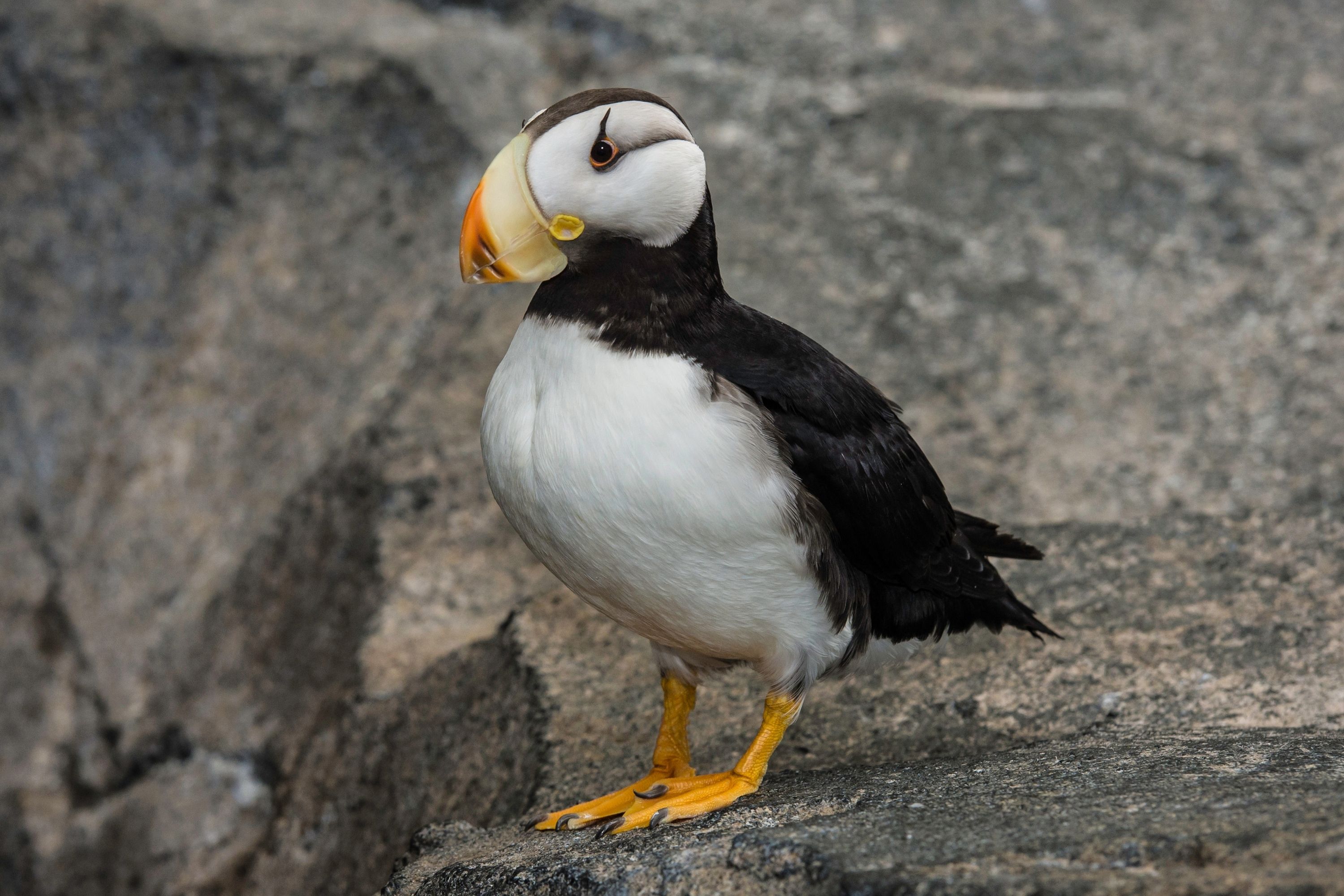Horned puffin
(Fratercula corniculata)

Description
The horned puffin (Fratercula corniculata) is an auk found in the North Pacific Ocean, including the coasts of Alaska, Siberia and British Columbia. It is a pelagic seabird that feeds primarily by diving for fish. It nests in colonies, often with other auks. It is similar in appearance to the Atlantic puffin, its closest relative of the North Atlantic, but differs by a "horn" of black skin located above the eye, present in adult birds. The height of the adult puffin is approximately 20 cm (8 in), the weight is approximately 500 g (18 oz), and the wingspan is approximately 58 cm (23 in). Horned puffins are monomorphic (the male and female exhibit the same plumage coloration). Sexually mature birds have a small fleshy black "horn" extending upwards from the eye, from which the animal derives its common name the horned puffin. A dark eyestripe extends backwards from the eye towards the occiput. The cheeks are white, with a yellow wattle at the base of the bill. The legs and feet are orange. The horned puffin's bill, which is larger than those of other puffin species, is red at the tip and yellow at the base. In summer (breeding) plumage, the bill's outer layer – the rhamphotheca grows in size and turns bright yellow with a dark orange tip. The size and color of the rhamphotheca helps to attract a mate. The brilliant outer layers of the rhamphotheca are shed in late summer, as the face reverts to a gray and black color, and the legs and feet fade to a pale fleshy color. This phase is referred to as eclipse plumage. The puffin's bill has fluorescent properties that are also used to attract a partner. Puffins can see ultraviolet rays, allowing them to spot luminescence on the bills of other puffins during the courtship display. The horned puffin chick has smoky-gray cheeks and a fine, black triangular-shaped beak. The feet are pinkish or greyish. The juvenile's height is less than that of the adult at the time of leaving the nest. Young puffins lose their greyish facial spots during their first springtime. The beak gains its developed form at the age of one year and continues to grow over the years, reaching the brightest coloration at five years, the point of sexual maturity. The puffin reaches its adult size and weight at this period. The horned puffin is relatively common across its range.
Taxonomic tree:







